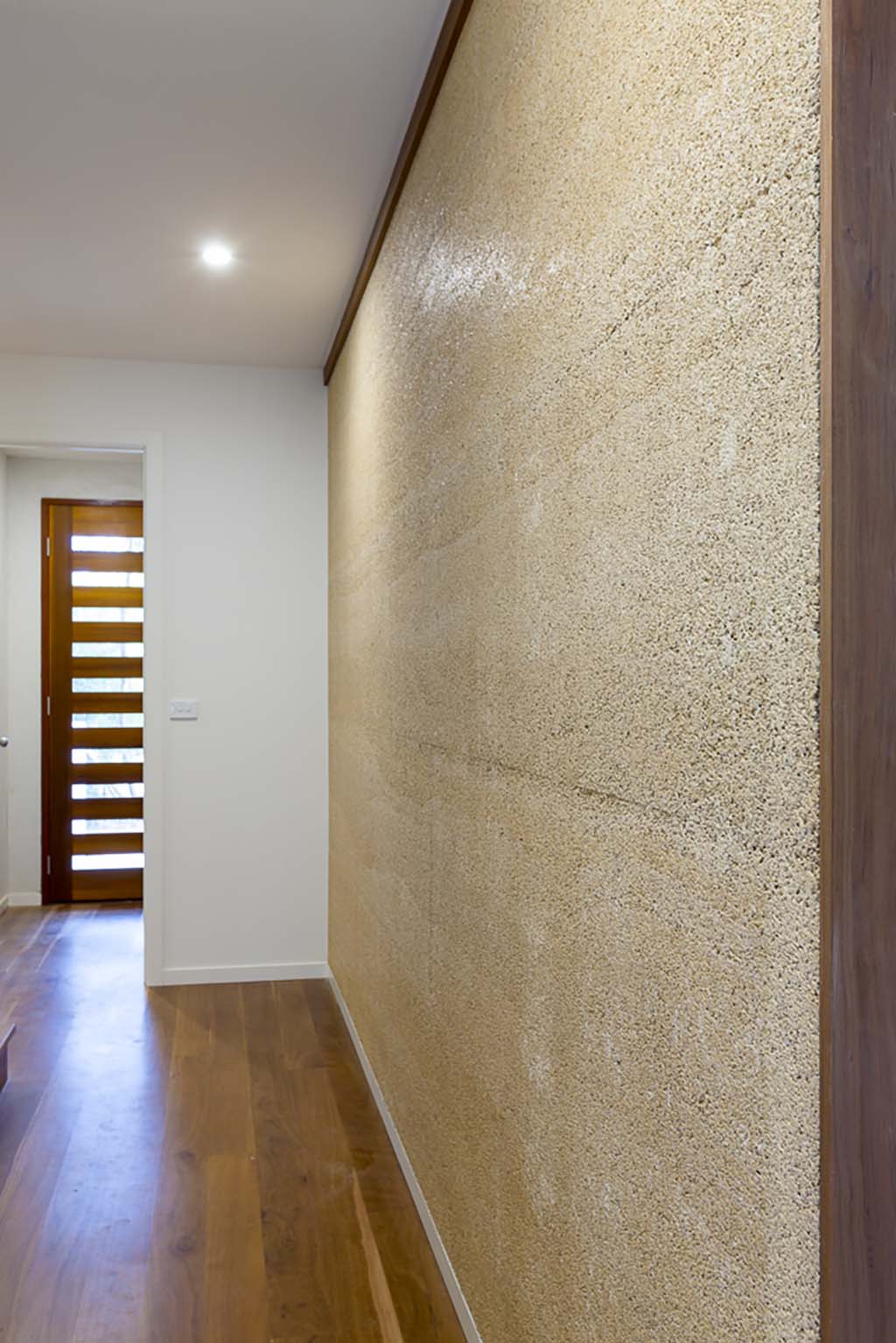To ensure a quality build, we recommend that Designers, Builders and Owner Builders develop a comprehensive understanding of the product. AHMC offers formal training in design and hemp construction combined with hands-on experience through regular Hemp Building Workshops.
ADVANTAGES OF BUILDING WITH HEMP MASONRY
- store carbon and can be recycled
- create a breathable building envelope ensuring improved indoor air quality
- provide exceptional thermal performance and comfort
- manage humidity and moisture in buildings very effectively
- providing good airtightness with simple detailing
- are effective acoustically. They dampen sound in buildings
- are simple to construct. Hemp building requires care but the skills are easy to learn.
- reduce the load on foundations because it is a lightweight material
- create zero waste (previously mixed material can be reintroduced in controlled proportions to new mixes or used in landscaping).
Exterior hemp walls should be finished with AHMC Hemp-lime Render, or another Lime render or breathable finish. Other than this hemp lime buildings needs no unusual protection from the elements.
FOUNDATIONS
To build an Australian Building Code compliant structure, a structural engineer should design the foundations of any Hemp building in accordance with Australian Standard “AS 2870 Residential Slabs and Footings”. Their advice will be informed by the soil type, the size of the building. intended roof spans and loads and wind-loads.
FRAMING
In Hemp construction, all vertical and lateral loads on the building are borne by the frame which can be a light timber frame, post and beam construction, steel or masonry.
Unless there are exceptional circumstances, simple single stud construction is recommended to minimise the amount of timber resource used.
FORMING UP THE WALLS
Formwork can be made from a wide variety of materials as the load on formwork is much less than for concrete. AHMC Hemp Masonry is a relatively light material and mixes are not wet, so slump is not an issue.
The most common formwork used by builders is 17mm non-structural form as it can be reused, but thinner materials can also be used, including where curved walls are to be formed.
Proprietary formwork and shuttering systems such as Geo-panel, or proprietary lightweight plastic systems such as those used for rammed earth construction can also be useful in hemp construction.
MAKING MIXES
The aim is to obtain an aerated mix resembling sticky crumble in which the hemp particles are well covered by the binder materials without the building material being too wet. It should be able to be formed into a ball and there should be no excess paste. The hemp should be clean and dry with minimal dust. If there is suspicion of damp or rot, the material should not be used. Hemp for building should always be stored in a dry place.
For information about mixers and a step-by-step guide to mixing.
